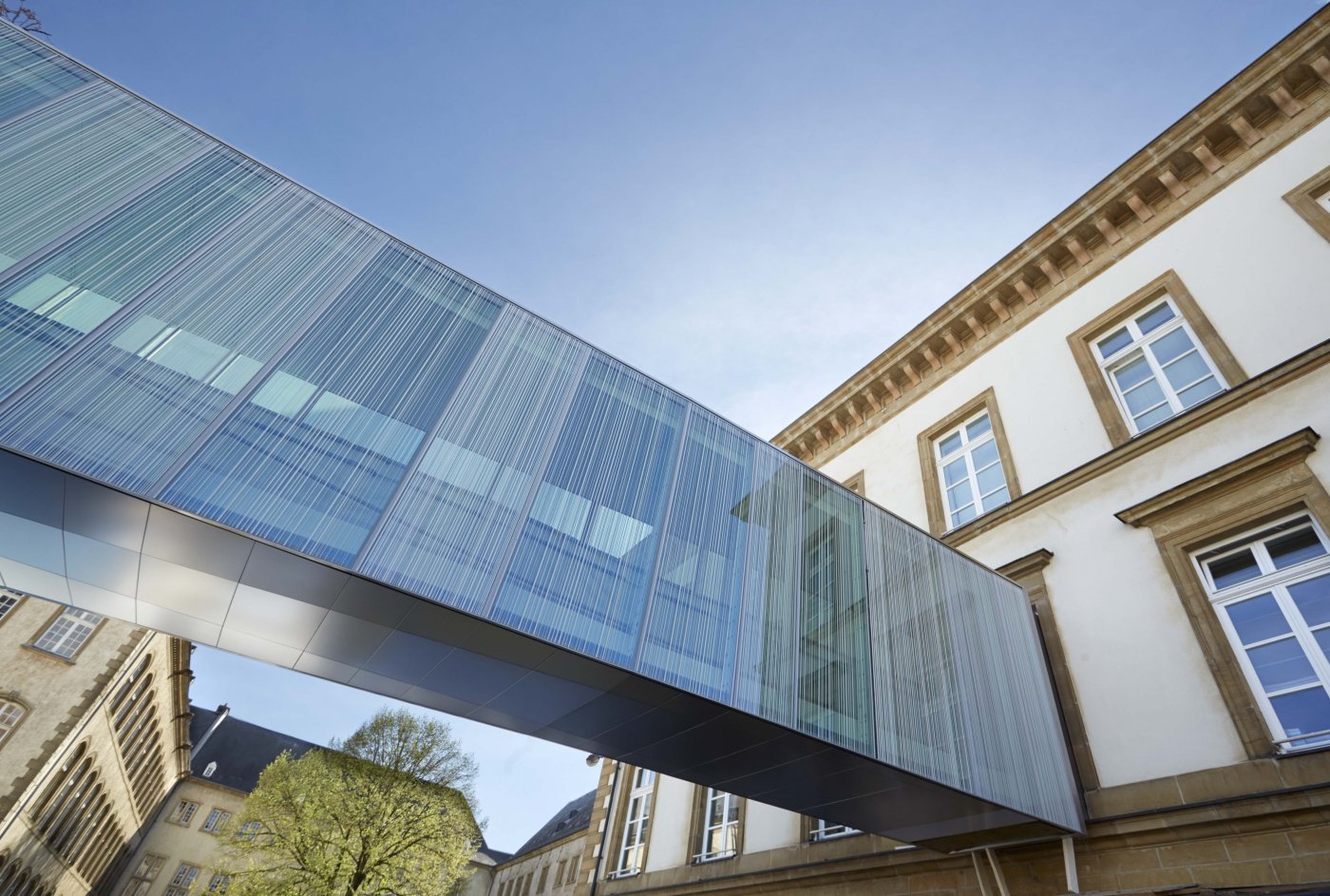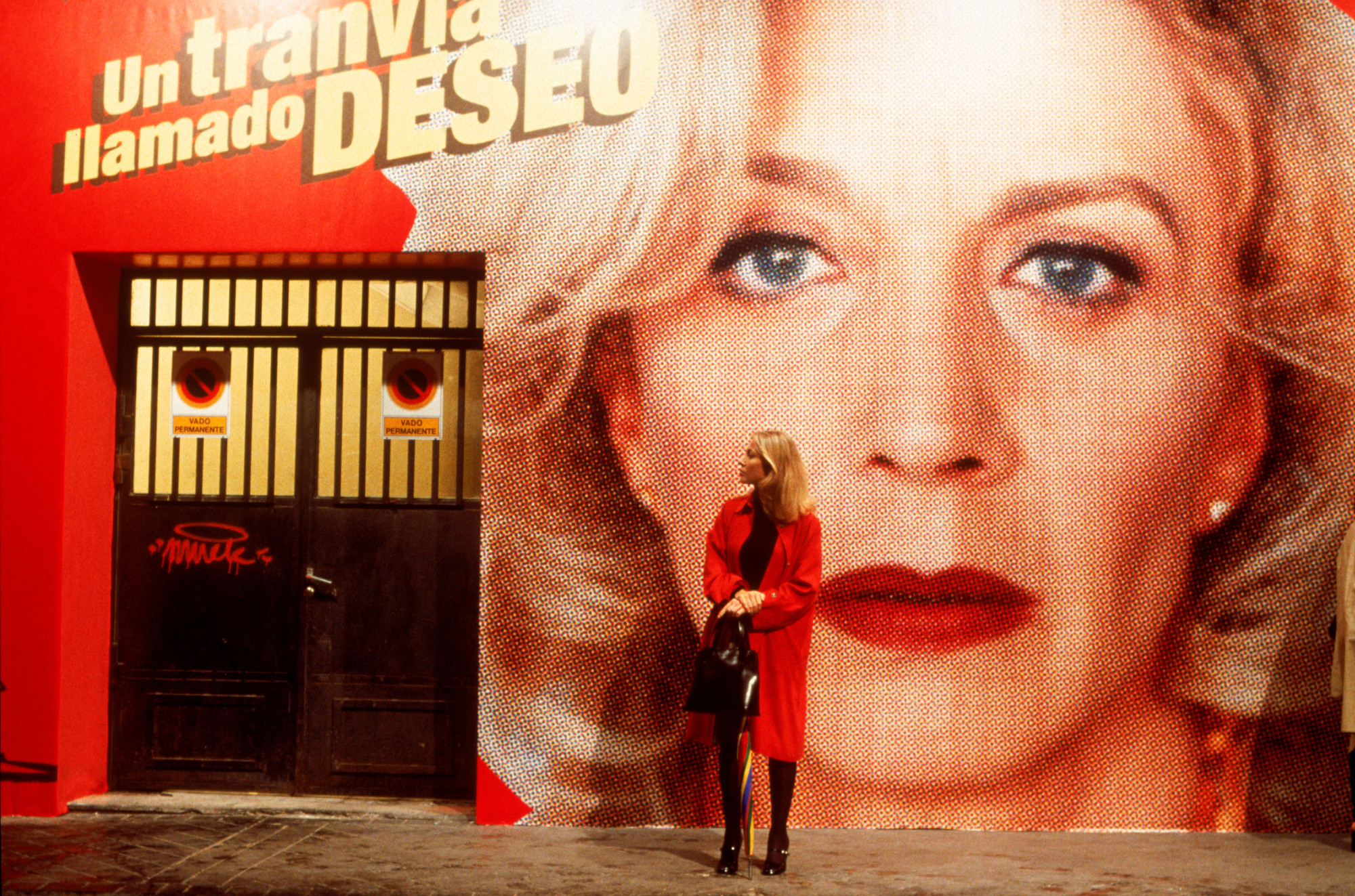Questions asked by Municipal Councillors
Menus served in the City of Luxembourg's foyers scolaires and crèches
Question posed by Nicolas Back
"Mayor Polfer,
Childhood obesity has become a serious issue in Luxembourg. Healthcare professionals are sounding the alarm about this problem, and the paediatric clinic has already implemented a programme to combat childhood obesity and help children lose weight. One of the main factors driving this problem is the overconsumption of sugars from an early age.
More than 4,000 children eat in the canteens of the City of Luxembourg's foyers scolaires (childcare centres) and crèches every day. As a general rule, the meals served in the crèches are cooked on-site, while the catering for the foyers scolaires is handled by subcontractors. Children, educators and parents regularly complain about the quality of the food and the lack of appealing vegetarian or organic options. For example, for the last few months, the meals served at the crèche in Rue de Chicago in Bonnevoie have been prepared by Sodexo. According to our information, the children are being fed more sugary meals than in the past, for example. Some weeks, the children were served sugar-containing meals four out of the five days. And how can a lunch still be appetising when it is delivered at 8 o'clock in the morning?
- What are the criteria for the meals delivered to the City of Luxembourg's foyers scolaires and crèches? What about uncooked, fresh, vegetarian and organic options? Does this align with the criteria that need to be met in order to retain the "GIMP – Gesond iessen, méi beweegen" label?
- How is quality controlled? What are the results of the quality controls?
- How many complaints by staff, parents and pupils do the departments in charge receive, and what are the complaints about?
- How many crèches and foyers scolaires have their meals delivered by subcontractors? How are the meals prepared on-site?
- To improve the quality of the meals served at the City's crèches and foyers scolaires, wouldn't it be appropriate to conduct a satisfaction survey among all of the stakeholders, or to include questions on the quality and variety of meals in the satisfaction survey that is currently being prepared for parents and children attending the foyers scolaires?
- Why has the City of Luxembourg not yet developed a project similar to SICONA's "Natur genéissen" project, in which healthy, regional and seasonal food is promoted and locally sourced? Can the College of Aldermen commit to doing this?
Response provided by Mayor Lydie Polfer
"Councillor,
In response to the questions you asked in your letter of 2 May 2024 about the menus served in the City of Luxembourg's foyers scolaires and crèches, I would like to share the following information:
1) Criteria for the meals delivered to the City of Luxembourg's foyers scolaires and crèches
The criteria for the meals delivered to the foyers scolaires and crèches are set out in a specifications document. Bearing in mind that theoretically the specifications are public – at least during the submission period – the main criteria for the composition and presentation of meals are listed in appendix 1 of this document.
The meals for children attending the foyers scolaires are not sweetened deliberately by added sugar. Rather, they are sweetened only with whatever amounts of sugar – glucose, fructose, etc. – occur naturally in the ingredients. This is also the case for drinking water and tea, which are served without added sugars.
As for the menus on offer, there have been some additions, such as:
- a monthly themed week called "Crunch the Garden", when a local, seasonal fruit or vegetable is featured and served in different forms;
- a vegetarian menu is available every day and, as part of the weekly schedule, we also offer one vegetarian day per week in accordance with the recommendations of the ministry's 2022 "Infant Feeding" (0-4 years) guide;
- and themed menus twice a month, such as an autumn menu, National Day menu, Carnival menu, and so on.
The water used to prepare baby bottles comes in glass bottles rather than plastic ones.
Homemade sugary foods are offered once a week for dessert and snacks. On the other days, desserts and snacks are fruit, dairy products, unsweetened cereals, bread and so on.
2) Quality control
The quality of the composition of meals, their production and the food chain is audited regularly, in accordance with the legal provisions and the contractual agreements between the external provider and the City of Luxembourg. This quality control encompasses:
- the composition of the meals based on a balanced nutrition plan (external dietician)
- the raw materials used (organic ingredients represent at least 50% of the purchase price)
- the processing of the materials and production of the meals
- the distribution and presentation of the meals
- the rate of waste
- the quality of the drinking water
- sanitary conditions, as covered by the HACCP (Hazard Analysis Critical Control Point).
These controls are carried out as twice-yearly audits conducted by the firm Celico at each of our seven production kitchens. Among other things, these audits assess the quality of the products purchased by inspecting the different labels, such as organic, local product, national brand or sustainable fishing certification. The results of the most recent audits can be found in appendix 2.
We also work closely with the dietician from the company Signa Consulting, who ensures that the current nutritional recommendations are adhered to by the Service Crèches (Crèche Department) when preparing menus. The dietician also conducts twice-yearly quality audits of the central kitchen, eats once a week with the children to get their opinions and taste the meals, and regularly visits the different crèches to get feedback from the staff about the meals that are served.
In addition, general meetings and meetings of the Menus Committee are held four times a year and as needed. At these meetings, the crèche directors, service provider, crèche administration and the dietician review and discuss the menus.
3) Complaints, audits, satisfaction surveys, etc.
The results of these audits are analysed and discussed every six weeks in a working group comprising representatives of the department's management, the team of nutrition specialists and the service providers Sodexo and Dussmann.
As for how complaints about the catering are handled, parents as well as employees at the site who take delivery of the menus always have the option of contacting the nutrition department by email or phone.
The crèche administrative team, head chef and dietician are in direct contact with the crèche heads for all complaints. The chef also regularly visits the crèches to get direct feedback from the staff and children.
Whenever the menu cycle changes – which happens twice a year – a tasting of the new menus is held at one of the foyers scolaires with the children so they can sample the new menu and share their thoughts. An example of an actual new-menu test form can be found in appendix 3.
On 11 June 2024, someone from the nutrition department visited the Limpertsberg foyer scolaire to dine with the children and parents in order to discuss the food and organisation of the canteen. In response to complaints they had received, the directors of the Limpertsberg foyer scolaire have been inviting parents to dine with their children. Since they began extending this invitation, the number of complaints has declined because the parents realised that their children's complaints reflected their personal tastes, not the quality of the meals provided.
4) Production principles, subcontractors and delivery of meals to foyers scolaires
The meals served at the foyers scolaires are prepared in seven production kitchens run by the City's Service Foyers scolaires (Childcare Department). The meals themselves are currently prepared by Sodexo and Dussmann, which were the successful bidders in the European public procurement competitions.
According to the most recent version of the specifications, which dates back to 2022, the successful bidder's main duties – that is, the services they must provide – include:
- complying with the requirements regarding the composition and presentation of meals;
- producing meals in the amount specified in the procurement contract, while complying with all health and hygiene requirements in the site's kitchen and, if necessary, in an external kitchen, subject to the municipality's prior consent, except for certain diets that must be produced in a special kitchen that is equipped for this purpose with the tools and procedures required to achieve a "zero defects" process;
- distributing meals at the site of the assembly kitchen and at the attached foyers scolaire(s), in accordance with HACCP requirements.
- performing catering-related duties (picking up and washing dishes).
5) Collaboration with SICONA and local producers
The Syndicat intercommunal pour la conservation de la nature (Intermunicipal Association for Nature Conservation – SICONA) is tasked by its member municipalities with protecting nature and conserving landscapes. The City of Luxembourg does not belong to SICONA. Regarding its "Natur genéissen" project, which was developed in 2014 and promotes the use of regional (within a 150 km radius) and seasonal products in childcare centres, we have opted for organic production, which amounts to 50% of the total food purchase price over six weeks. In the new specifications, the criteria set out in the "PAN Bio 2025" national plan apply in this regard, that is to say, 50% of the food used must originate in Luxembourg. These criteria are stricter than those used in SICONA's "Natur genéissen" project, which require only 30% organic food.
The specifications already prioritise regional products, stipulating that at least 50% of the total purchase value must be organic food products that are certified and preferably regional and seasonal.
Specific requirements by food group have also been developed – for example, certified wild fish, sustainable fishing, fresh herbs, fair trade cocoa and so on.
The food required to produce around 4,000 meals a day for foyers scolaires children and staff most likely exceeds regional organic production capacity according to the specific criteria, and probably would have also greatly limited the choice of food that could be offered to our children.
6) Conclusion
While it is true that sugary products can contribute to obesity and the development of a distinct taste for sugary food, nutrition education and developing a healthy relationship with food are also important. The parties responsible for the meals served at the City of Luxembourg's foyers scolaires and crèches always strive to ensure that the food is of high quality and that everyone is satisfied.
This response is being provided pursuant to Article 25 of the Municipal Law, as amended on 13 December 1988, and Article 9 of the City of Luxembourg Municipal Council's internal rules and regulations of 13 May 2013, as amended, and, as such, shall be considered as equivalent to a written reply to the question that was asked. It will be published in the minutes and on the City of Luxembourg website."
Fire alarm in the Knuedler car park on 20 July 2024
Question posed by Nicolas Back
"Mayor Polfer,
On Saturday, 20 July, a fire alarm blocked the exits of the Knuedler car park. Fortunately, there wasn't actually a fire, and no one was hurt. However, people were stuck in the car park for several hours, and the fire alarm was set off several times. According to reporting by RTL (: https://today.rtl.lu/news/luxembourg/a/2225802.html), the incident lasted for more than two and a half hours.
Could you provide us with more details on how this incident played out and what caused it?
What safety measures and procedures had been put in place and tested prior to the incident – specifically, with the CGDIS (Corps grand-ducal d'Incendie et de Secours – Grand Ducal Fire and Rescue Corps) – to respond to a fire in the Knuedler car park?
- How long did it take for a technician who could resolve the issue to arrive on-site? When were the last people who were stuck able to leave the car park?
- In the agreement between the City of Luxembourg and the car park operator, what are the terms and conditions that govern this sort of issue? Within how many hours is a technician required to arrive on-site, and within how many hours are they required to resolve the issue? Were all the terms and conditions abided by?
- How is it possible that, after several hours, people were still stuck in the underground levels of the car park? Why weren't they evacuated from the car park until the issue was resolved? Didn't this put them at risk?
- People kept their engines running. Didn't that pose a health risk for them? Why didn't anyone ask them to turn off their engines?"
Response provided by Mayor Lydie Polfer
"Councillor,
In response to the question you asked in an email dated 23 July 2024 about the fire alarm in the Knuedler car park on 20 July 2024, I can provide you with the following information:
- Details on how this incident transpired and its cause
The first alarm was set off at 19:09 on level -3 of the car park, near a heat-sensitive cable sensor. Safety measures were immediately activated: the doors to the stairwells on each floor of the car park were closed, the sliding fire doors to the traffic ramps were closed, the ventilation system was turned off, and visual and acoustic (siren) evacuation alerts were triggered. People could leave the car park at any time on foot using the five stairwells emerging in Place Guillaume II / Rue Notre Dame.
The car park employee went to level -3 of the car park to assess the situation, and ascertained that there was no fire. As he was unable to turn the alarm off manually, he called technicians. While he was waiting for them to arrive, car park users set off three manual fire alarms for no good reason. After the technician who could resolve the issue arrived, the four alarm messages were disabled. All of the sliding fire doors to the traffic ramps were opened electronically at 21:37, except for the one between levels -1 and -2, which had to be opened manually because some car park users had dislodged it by force, causing a significant delay in reopening that door.
An investigation of the incident conducted by the company in charge of the fire detection system in the Knuedler car park found that the incident – the initial triggering of the incident alarm – occurred because of a defect in a heat-sensitive cable sensor and a disruption in the sensor's resistance setting. As it happens, after the car park was renovated, this cable was extended to also monitor the adjacent traffic ramp, but the installation company forgot to reprogram the sensor's resistance setting. The accredited inspection agency in charge of the technical infrastructure did not notice this failure, nor was it noticed upon acceptance of the infrastructure.
I want to stress that after this oversight was established, all of the other heat-sensitive cable sensors installed in the car park were inspected, and no additional defects were found.
- What safety measures and procedures had been put in place and tested prior to the incident – specifically, with the CGDIS – to respond to a fire in the Knuedler car park?
The car park complies with all of the requirements established by the Inspectorate of Labour and Mines (Inspection du travail et des mines – ITM). A number of fire-detection and fire-extinguishing measures have been put in place at the car park, including a sprinkler system throughout the entire car park, a fire detection system, fire extinguishers, a carbon monoxide detection system, sliding fire doors, emergency lighting, illuminated signage for evacuation and emergency routes, gas detectors, CCTV, and a building digital radio system connected to the CGDIS and the police. All of these systems have been tested and approved by an inspection agency.
In the event of a fire or other incident, visitors are alerted by sirens and a visual alert. Evacuation maps are posted at each exit. If a fire alarm goes off, the electric charging stations on level 0 are disabled, as are all elevators. The car park entrance is blocked, but the exit opens for vehicles on level 0, where there are also parking spaces for people with reduced mobility.
During a tour of the premises with the CGDIS planning unit in December 2022, the ways to enter the car park and access the sprinkler system were clarified. In addition, digital maps of the car park were sent to the CGDIS so that they would have them on hand if they need to respond to a fire.
Finally, the car park has a phone line that is staffed 24/7 and used exclusively to call the emergency services.
- How long did it take for a technician who could resolve the issue to arrive on-site? When were the last people who were stuck able to leave the car park?
According to the information we have, the technician who could resolve the issue arrived at the car park at around 20:35. He was delayed because a section of the motorway on the route he had taken was closed.
Users began exiting the car park at 21:37. This took a fair amount of time because a lot of cars wanted to leave at the same time.
- In the agreement between the City of Luxembourg and the car park operator, what are the terms and conditions that govern this sort of issue? Within how many hours is a technician required to arrive on-site, and within how many hours are they required to resolve the issue? Were all the terms and conditions abided by?
The car park operator responded by completing the following tasks stipulated in the agreement signed with the City: after the fire alarm went off, the caretaker immediately went to the room housing the fire detection control unit to check the information about the alarm. He then went straight to level -3 to assess the situation. As he found nothing out of the ordinary, he attempted to deactivate the alarm manually. In light of the circumstances I have already described, it took more time to resolve the issue. The operator did comply with the contractual terms and conditions. Had the aforementioned circumstances not occurred, the issue would have been resolved more quickly.
- How is it possible that, after several hours, people were still stuck in the underground levels of the car park? Why weren't they evacuated from the car park until the issue was resolved? Didn't this put them at risk?
It needs to be emphasised that at no time were the people in question stuck inside the car park, and that they could have left the car park on foot at any time via the stairwells, yet the majority of the users did not do so.
The caretaker and the police did their best to get the people inside the car park to leave the premises, but to no avail.
As it was a false alarm, these people were not at risk.
- People kept their engines running. Didn't that pose a health risk for them? Why didn't anyone ask them to turn off their engines?
Yes, there were people sitting in their cars with the engine running. The exhaust fumes set off the carbon monoxide detection system. However, because the detection threshold was low, there was no risk to health of those involved.
The car park operator's staff and the police did in fact ask the people whose engines were running to turn them off.
This response is being provided pursuant to Article 25 of the Municipal Law, as amended on 13 December 1988, and Article 9 of the City of Luxembourg Municipal Council's internal rules and regulations of 13 May 2013, as amended, and, as such, shall be considered as equivalent to a written reply to the question that was asked. It will be published in the minutes and on the City of Luxembourg website."
Article 13, paragraph 3 of the Municipal Law establishes that each member of the Municipal Council, acting in their individual capacity, shall enjoy the right of initiative to add to the agenda drawn up by the College of Aldermen one or more proposals that they wish to submit to the Municipal Council.
Such proposals must be submitted to the mayor in the form of a written reasoned request at least three days before the meeting of the Municipal Council.

















